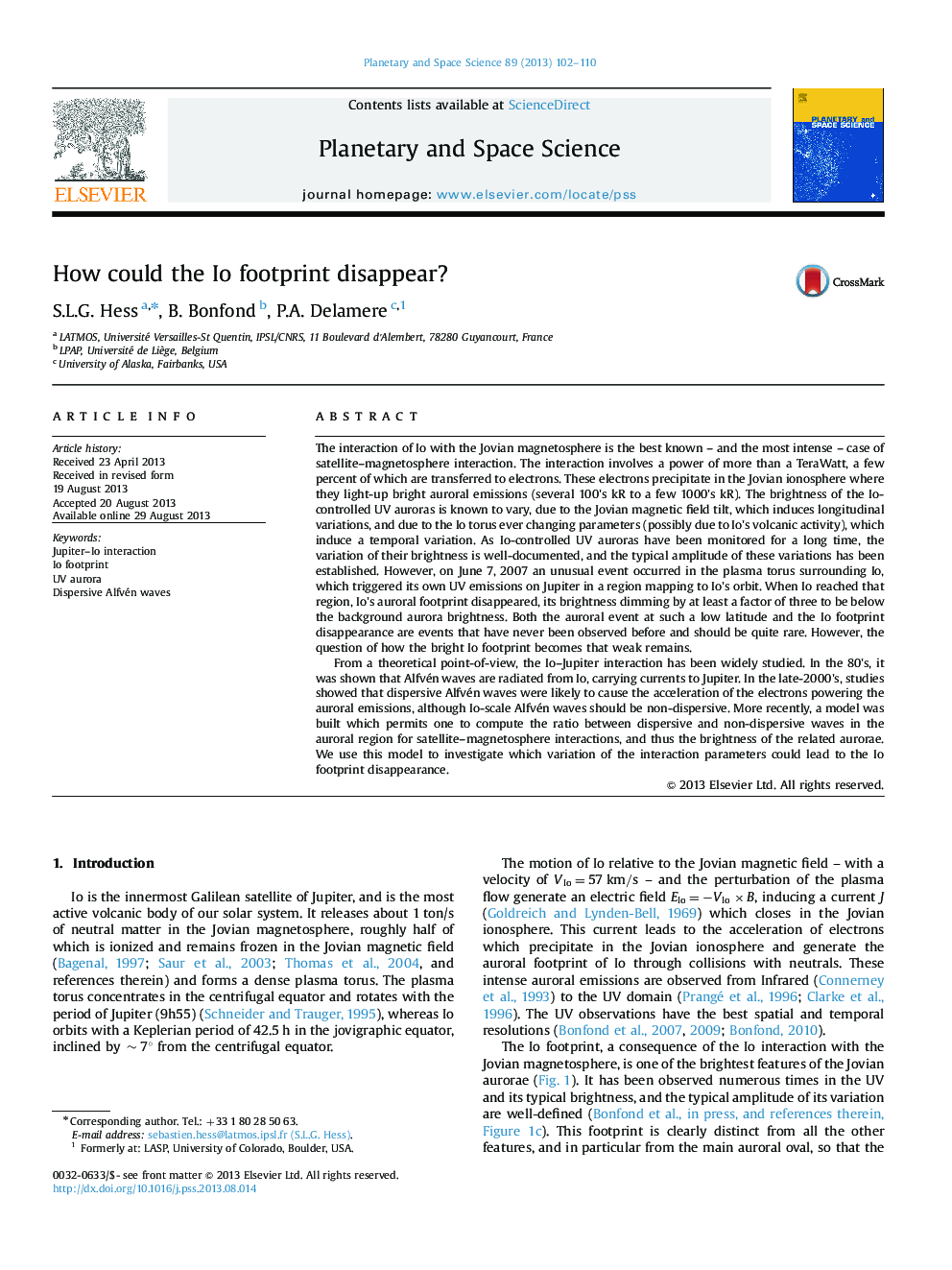| کد مقاله | کد نشریه | سال انتشار | مقاله انگلیسی | نسخه تمام متن |
|---|---|---|---|---|
| 1781238 | 1523947 | 2013 | 9 صفحه PDF | دانلود رایگان |

• In 2007, an event happened during which the Io auroral footprint on Jupiter disappeared.
• We use a model to investigate which parameters can be responsible for the disappearance.
• The disappearance of Io's footprint may be due to an earlier flux tube interchange event.
• The present study gives a simple explanation to an unusual occurrence.
• It shows the dependence of the satellite–magnetosphere coupling for different parameters.
The interaction of Io with the Jovian magnetosphere is the best known – and the most intense – case of satellite–magnetosphere interaction. The interaction involves a power of more than a TeraWatt, a few percent of which are transferred to electrons. These electrons precipitate in the Jovian ionosphere where they light-up bright auroral emissions (several 100's kR to a few 1000's kR). The brightness of the Io-controlled UV auroras is known to vary, due to the Jovian magnetic field tilt, which induces longitudinal variations, and due to the Io torus ever changing parameters (possibly due to Io's volcanic activity), which induce a temporal variation. As Io-controlled UV auroras have been monitored for a long time, the variation of their brightness is well-documented, and the typical amplitude of these variations has been established. However, on June 7, 2007 an unusual event occurred in the plasma torus surrounding Io, which triggered its own UV emissions on Jupiter in a region mapping to Io's orbit. When Io reached that region, Io's auroral footprint disappeared, its brightness dimming by at least a factor of three to be below the background aurora brightness. Both the auroral event at such a low latitude and the Io footprint disappearance are events that have never been observed before and should be quite rare. However, the question of how the bright Io footprint becomes that weak remains.From a theoretical point-of-view, the Io–Jupiter interaction has been widely studied. In the 80's, it was shown that Alfvén waves are radiated from Io, carrying currents to Jupiter. In the late-2000's, studies showed that dispersive Alfvén waves were likely to cause the acceleration of the electrons powering the auroral emissions, although Io-scale Alfvén waves should be non-dispersive. More recently, a model was built which permits one to compute the ratio between dispersive and non-dispersive waves in the auroral region for satellite–magnetosphere interactions, and thus the brightness of the related aurorae. We use this model to investigate which variation of the interaction parameters could lead to the Io footprint disappearance.
Journal: Planetary and Space Science - Volume 89, December 2013, Pages 102–110